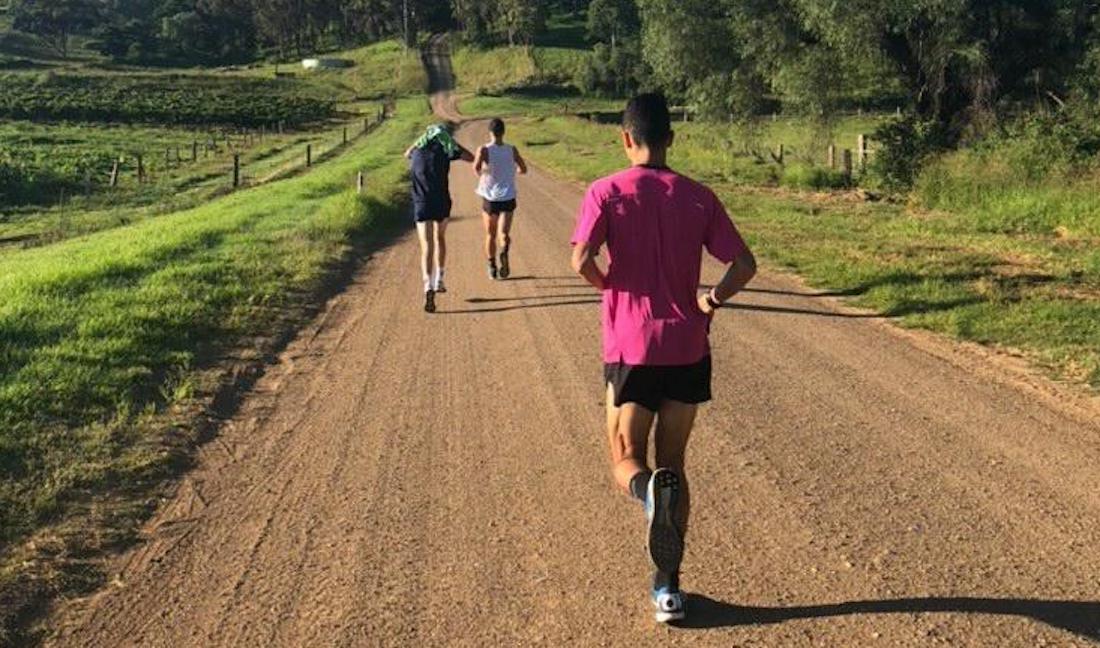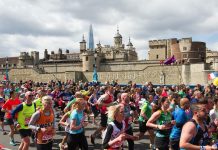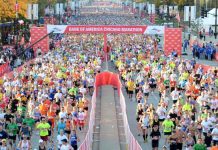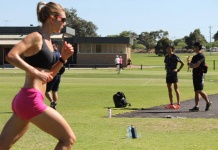Everything about our bodies has evolved to run. While we’re not the fastest animals, human beings are the best long-distance runners on earth. A huge amount of our success as a species comes from our ancestor’s ability to chase large prey across the plains, literally running them to exhaustion.
But that doesn’t mean we don’t need a little help from time to time. Knowing the best way to treat your body before, during and after a run can improve your speed, endurance and overall well being while running.
These three medical secrets, shared with us by our team of experts, will help you avoid injury, improve your running technique and allow you to enjoy your runs even more.
1. Rolling your foot before running
Before setting out on a run, give yourself a few minutes to roll your foot. A foam roller works but a cheaper and more effective method is to use a small ball. Tennis, lacrosse and golf balls all work very well. They’re small enough to reach the intricate muscles in your foot that a foam roller misses.
Rolling your feet before running helps loosen muscle tissue, increase range of motion and boost blood flow. The improved elasticity and range of motion protect you from injury by allowing your feet to flex without straining.
Running with stiff feet can make your heel strikes more intense, which risks impact-related injuries.
The benefit of rolling doesn’t end there. By loosening the muscles in your feet, you’re improving the overall mobility in your calves, thighs and back too.
How to effectively roll your feet before running:
- Sit in a chair with your feet flat on the floor.
- Place the small ball or foam roller under your foot — it’s best to do one foot at a time.
- Slowly roll your foot over the ball (or roller) — your foot should move along the ball at roughly 1 inch per second.
- Continue this for two minutes on each foot.
- If you find any areas that are more tender, focus on them for an extra 30-60 seconds at a time — rolling may be uncomfortable but it shouldn’t be agonising. If the pain is too much, stop and talk to a medical professional.
This technique is very good at preventing plantar fasciitis but the jury is out on whether it helps if you’re already suffering with the condition.
It’s also good practice to roll your feet after a run. This increases blood flow which stimulates healing. It also breaks down knots and separates muscle fibres which can limit your range of motion.
2. Look straight ahead while running
This actually has less to do with where you’re looking and more to do with your head position and overall posture.
But unless you’re an elite-level athlete, your head and consequently the rest of your body, will follow your gaze as you run.
Staring straight at the ground pulls your head down and causes your whole body to lean forward. This increases tension in your neck and shoulders. It also makes each foot strike harder, which can lead to injuries and complications.
Looking up above the horizon while running overextends your back, increases tension in your neck and makes you far more prone to impact-related injuries. It can also affect your balance and throw off your gait. Both of which can lead to injury.
The most efficient place to look while running is 10-20 metres ahead. This allows you to spot potential hazards while maintaining a good overall posture.
The terrain you’re running through plays a role here too. If you’re a trail runner, taking on a tough, rocky environment you’ll need to pay closer attention to the ground to avoid tripping. In this instance, look forward as often as possible and ensure you warm up/cool down before and after every run.
3. Cooldown
Cooling down reduces your risk of injury by elongating and separating muscle fibres. This prevents knots, tears and stains, all of which can severely hamper your training regime.
And the benefits of a proper cool down don’t end there.
A good cool-down session will reduce the build-up of lactic acid in your bloodstream. Lactic acid is created during hard exercise and is most notably the cause of cramp. If lactic acid buildup is too great, it can cause swelling and ongoing muscle soreness.
Cooling down allows your heart rate and breathing to return to normal after exercise. If you’ve ever felt lightheaded soon after finishing a run, it’s likely because your blood pressure dropped too quickly.
While running, your heart rate and blood pressure increase, delivering much-needed oxygen to your muscles. If you stop suddenly, the quick drop in blood pressure reduces the oxygen to your entire body, including your brain. This creates feelings of dizziness or lightheadedness.
How to cool down effectively:
The best way to cool down is to continue your exercise for 5-10 minutes after your training session is over. You should do this at a slower pace and lower intensity. For example, after your run, take a brisk 10-minute walk, slowly reducing your speed to a gentle stroll.
Simple stretches and foam rolling are also both excellent ways to cool down after a run. They’ll reduce stiffness and improve recovery time.















